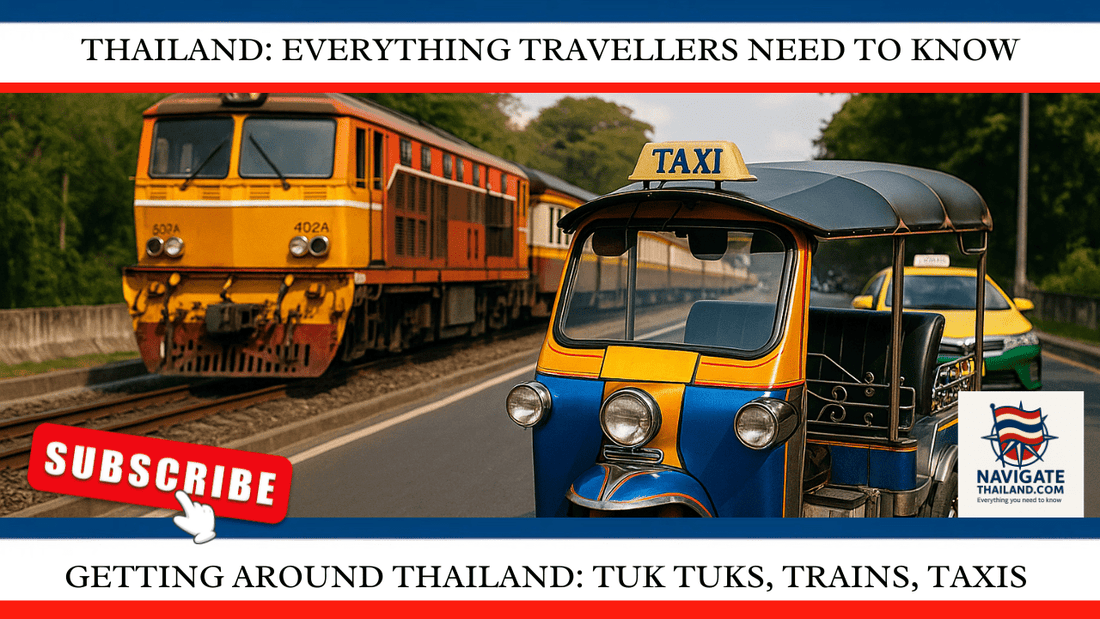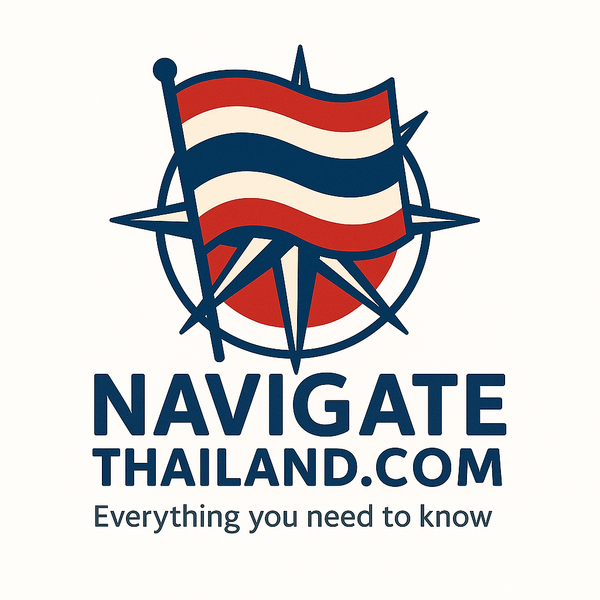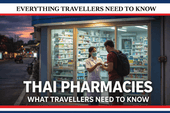
Getting Around Thailand in 2025: Tuk Tuks, Trains, Taxis & More
Share
Thailand is a mesmerising mix of vibrant cities, serene beaches, and lush countryside—and getting around is all part of the adventure. Whether you’re weaving through Bangkok traffic in a tuk tuk or watching the jungle roll by on a long-haul train, the Land of Smiles offers travellers a variety of fun and practical ways to explore.
This guide breaks down everything you need to know about transportation in Thailand, including tuk tuks, taxis, trains, motorbike taxis, songthaews, and ride-hailing apps. Let’s dive in.
1. Tuk Tuks – The Iconic Three-Wheeler
No visit to Thailand is complete without a tuk tuk ride. These three-wheeled motorised vehicles are especially popular in Bangkok, Ayutthaya, and Chiang Mai.
How They Work:
Tuk tuks operate like taxis, but without meters—so fares must be negotiated before the ride. Expect to pay 100–300 THB depending on the distance and your haggling skills.
Traveller Tips:
• Always agree on a price before you get in
• Avoid during rush hour if you value comfort over chaos
• A short, scenic ride is worth it for the experience alone
2. Taxis – Metered, Comfortable, and Easy to Find
Taxis are a safe and affordable way to get around Thailand’s major cities. Bangkok in particular has a large fleet of metered taxis in pink, green-yellow, and blue colours.
What to Know:
• Starting fare in Bangkok is 35 THB
• Always insist on the meter being turned on
• Carry smaller bills for payment
Airport Taxis:
• Suvarnabhumi and Don Mueang Airports: Official queues with a 50 THB surcharge
• Phuket Airport: Higher fares; Grab and private car services are popular alternatives
3. Motorbike Taxis – Fast & Efficient
Perfect for solo travellers in a hurry, motorbike taxis zip through traffic quickly and are great for short hops in Bangkok, Chiang Mai, and Pattaya.
Look for: Drivers wearing coloured vests, usually stationed near BTS/MRT stops.
Pricing: Starts around 20 THB. Always negotiate or confirm the price before riding.
Safety Tip: Helmets are mandatory—ask for one!
4. Songthaews – Thailand’s Shared Pickup Trucks
A budget-friendly way to travel short distances, songthaews are modified pickup trucks with two bench seats in the back.
How They Work:
• Wave one down, tell the driver your destination
• If they’re headed that way, hop in
• Press the buzzer to get off and pay at the end
Cost: Typically 20–50 THB per ride
Popular In: Chiang Mai, Pattaya, Phuket
5. Trains – Scenic and Budget-Friendly
Thailand’s trains, operated by the State Railway of Thailand, are ideal for longer trips—especially between Bangkok, Chiang Mai, and Surat Thani.
Classes:
- First Class: Private cabins with air-con
- Second Class: Sleeper bunks or seats with AC/fan
- Third Class: Basic seats for short journeys
Booking:
• At any railway station
• Online at www.railway.co.th
• Book early for overnight routes or holidays
Popular Route: Bangkok to Surat Thani (gateway to Koh Samui, Koh Phangan, Koh Tao)
6. BTS Skytrain & MRT Subway – Bangkok’s Urban Lifeline
The BTS Skytrain and MRT subway are fast, clean, and air-conditioned—great for getting around Bangkok.
BTS:
• Covers Sukhumvit, Silom, Siam
• Fares: 16–59 THB
• Use a Rabbit Card for convenience
MRT:
• Blue & Purple Lines
• Connects major spots like Chatuchak Market and Hua Lamphong
• Fares: From 16 THB
7. Ride-Hailing Apps – Grab & Bolt
Apps like Grab and Bolt are available in most major Thai cities and offer cars, motorbikes, and even food delivery.
Grab:
• Widely used across Thailand
• Offers cars, motorbikes, premium rides
• Integrated with food delivery
Bolt:
• Generally cheaper than Grab
• Focused on Bangkok and Chiang Mai
• No credit card required—pay cash to driver
8. Private Drivers – Ideal for Day Trips
Hiring a private driver is perfect for exploring islands like Phuket or mountain towns like Chiang Mai.
Rates:
1,500–2,500 THB per day, depending on distance and vehicle type
Where to Book:
Your hotel, local tour desks, or online travel forums
9. Airports – Domestic and International Hubs
Thailand has dozens of domestic airports and four major international gateways:
• Suvarnabhumi Airport (BKK): Bangkok’s primary international hub
• Don Mueang Airport (DMK): Budget carriers, mostly domestic
• Phuket International Airport (HKT): Southern Thailand entry point
• Chiang Mai International Airport (CNX): Northern travel hub
Final Tips for Travelling Around Thailand
• Carry a photo of your destination in Thai
• Download Grab or Bolt for easy navigation
• Keep small notes and coins for fares
• Avoid rush hours in Bangkok (7–9am and 4:30–7pm)
• Be patient—travel is part of the Thai experience!
Conclusion: Explore Thailand on Your Terms
Whether you’re hopping on a tuk tuk through Bangkok’s Old Town, booking a sleeper train to the southern islands, or catching a BTS to the Chatuchak Weekend Market, Thailand’s transport system is part of the charm. With options to suit every budget and style, you’ll be navigating like a local in no time.
References
- State Railway of Thailand – www.railway.co.th
- Grab Thailand – www.grab.com/th
- BTS Skytrain – www.bts.co.th
- MRT Bangkok – www.bemplc.co.th
Read more of our Thailand blog series:
Thai Food Guide:Traditional Recipes and Street Eats
Everything Travellers Need to know
Thailand travel ebooks and language guides
Thailand Travel Apparel & Souvenir Gifts
Subscribe to our YouTube channel Navigate Thailand to see our most popular Thailand travel blogs turned into videos:
Navigate Thailand YouTube channel


















































































































































